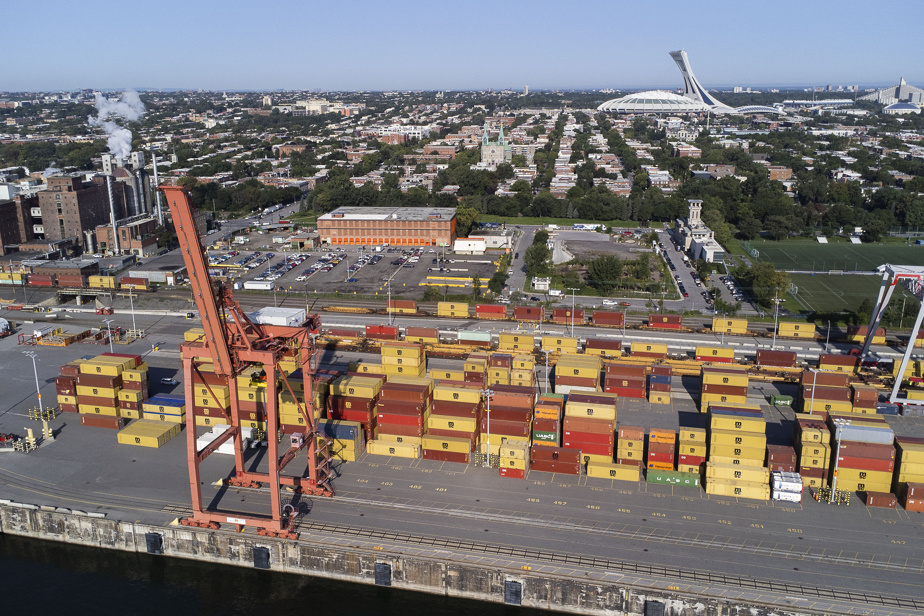The Port of Montreal is struggling to convince the private sector to finance its expansion in Contrecœur. In the hope of achieving this, the federal agency is resigning itself to taking more risks and will assume full responsibility for the “water” part of this megaproject whose bill has exploded to 1.4 billion.
The Port of Montreal wants to expand in Contrecœur.
The bill explodes to 1.4 billion, and a new call for tenders is necessary.
Ottawa is injecting $150 million into the project. Quebec put in 130 million.
If the Montreal Port Authority (MPA) has finally obtained the financial boost of 150 million that it expected from the Trudeau government, it must once again go back to the drawing board because things are not going as it should. foreseen.
Thus, the call for proposals put forward by the former president and CEO of the Authority Martin Imbleau – in which the objective was to obtain a turnkey solution in terms of design, construction, financing , operations and maintenance – was torpedoed.
“We are responding to what the market currently wants,” defended the interim president and CEO of the APM, Geneviève Deschamps, in an interview with La Presse, accompanied by the vice-president of the Contrecœur project, Paul Bird.
The result is what has been pronounced a “hybrid approach.”
This means that the APM will be the prime contractor for everything relating to the dredging of the St. Lawrence River and the construction of the docks. She says she is finalizing negotiations with a “general contractor” as well as an “engineering firm.”
The other component will take the form of a call for proposals by invitation, which will be launched next year, to identify the private partner responsible for the construction of the terminal, namely the container yard, the buildings and the rail connection. , notably.
“We are being pushed in a direction that tells us: we are ready to invest in the land part, but not in the water part. The construction risk is too high. The risk is assumed by the APM. »
Obviously, the three consortia selected in May 2022 – including two international groups – were no longer inclined to share the financial risks for the entire project. Last September, La Presse reported that interest from the two foreign consortiums, Ports America Holdings and Terminal Investments Limited, had faded.
“The change in market conditions [the rise in interest rates] is indeed part of the reasons why we need to change the process,” says Ms. Deschamps.
The Contrecœur terminal must be able to handle 1.15 million “twenty-foot equivalent” (TEU) containers annually. Currently, the Port of Montreal can accommodate up to approximately 2 million metal boxes. Even before the first shovel in the ground, the project faces significant cost overruns. It will cost at least 1.4 billion, compared to the previous forecast of between 750 and 950 million.
The financial package is still not complete. Ottawa will put up 150 million, the Legault government will contribute 130 million, and the Canada Infrastructure Bank (CIB) must also offer 300 million in loans.
“It is when we have the final price of the construction costs that we will determine what additional contributions are, if they are necessary,” affirms Mr. Bird.
Despite the cancellation of the process which was launched in November 2021. Ms. Deschamps and Mr. Bird assure that the APM is not starting from scratch. All the upstream work done over the last 24 months surrounding engineering and design can be reused, they say.
Transport specialist and professor at Hofstra University in New York, Jean-Paul Rodrigue believes that this new pitfall in the Contrecœur terminal file demonstrates the limits of the Port of Montreal, which cannot accommodate container ships carrying more than 6000 metal boxes.
Megaships which can accommodate more than 10,000 TEU containers and which are increasingly popular around the world cannot dock in the metropolis.
“My hypothesis is that the Port of Montreal is not large enough in terms of commercial potential to justify massive investments by large commercial firms,” says Mr. Rodrigue. If it was a project [Contrecœur] with high potential, there would have been money. This is the curse of port size. It is not big enough to attract large operators around the world who have sufficiently strong backs. »
The most recent timetable for the gradual commissioning of activities at the Contrecœur terminal is towards the end of 2026. Listening to Ms. Deschamps, this target could change again. In his opinion, we will have “a better idea” of the “total timeline” during the first quarter of 2024.
Alongside the financial issues, the APM is still waiting for the green light from the federal government to encroach on the essential habitat of the copper redhorse, threatened with extinction. Ottawa has protected part of the habitat of this fish on which the proposed construction site partially encroaches. The Port of Montreal must therefore obtain a permit from Fisheries and Oceans Canada under the Species at Risk Act. When questioned, Minister Pablo Rodriguez said he was convinced that this was just a formality. The Society for Nature and Parks (SNAP Quebec) sees things differently: “The repeated announcements of investment before the project has even obtained all the authorizations demonstrate the government’s bias and contribute to undermining independence of the civil service”, denounces its general director, Alain Branchaud.
